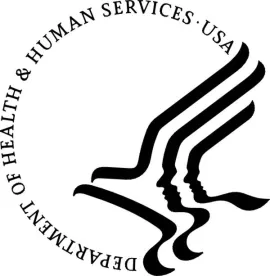On September 30, 2021, the U.S. Departments of Health and Human Services (HHS), Labor and Treasury (collectively, the Departments) along with the Office of Management and Budget released “Requirements Related to Surprise Billing: Part II,” as an interim final rule with comment period (the Part II Rule). Part I regulations were issued on July 13, 2021 (Part I Rule). The Part II Rule contains provisions addressing the following No Surprises Act requirements:
-
the independent dispute resolution process for deciding rates between plans/issuers and out-of-network (OON) providers in certain situations;
-
good faith estimates for items or services for uninsured (self-pay) patients;
-
the patient/provider dispute resolution process if billed charges exceed good faith estimates; and
-
expanded rights to external review.
The provisions of the Part II Rule are generally effective to group health plans and health insurance issuers for plan and policy years beginning January 1, 2022 or after. The HHS-only regulations applicable to providers are applicable beginning January 1, 2022. The U.S. Office of Personnel Management (OPM)-only regulations applicable under the Federal Employee Health Benefits Program are effective as to contract years beginning on or after January 1, 2022.
The rules regarding the independent dispute resolution and selected dispute resolution entities are effective upon publication in the Federal Register. Written comments on all parts of the Part II Rule must be reviewed by the date 60 days following publication in the Federal Register.
Background
The No Surprises Act was enacted on December 27, 2020 as part of the Consolidated Appropriations Act of 2021. It was generally designed to provide protection from patients being surprised by bills for health care and excessive patient cost-sharing payment obligations. The protection is generally aimed at situations where patients (i) receive care from OON providers who furnish services at in-network facilities, (ii) receive emergency care from OON providers, or (iii) use OON air ambulances.
The Part I Rule included provisions that:
-
require patient cost-sharing for all emergency services to be determined at in-network rates;
-
ban balance billing for emergency services;
-
specify that patient cost-sharing for certain non-emergency services provided by an OON provider at an in-network facility be no higher than if the services were provided by an in-network provider and based on in-network provider rates;
-
prohibit OON charges provided by an OON provider at an in-network facility, unless certain notice is given and consent obtained from a patient to accept OON charges (the notice/consent exception only applies to certain types of health care services); and
-
specify that patient cost-sharing for emergency services and certain non-emergency services provided by OON providers at in-network facilities must be similar to those as if the provider were in-network. Generally, that means a rate based on state All Payor Model Agreement, state law, or the “Qualifying Payment Amount” (QPA) (generally, the plan/issuer’s median contracted rate for a similar service in the same geographic area). The balance of the bill between the plan or issuer and the provider is to be determined in a 30-day open negotiation and, if no agreement is reached, through a federal dispute resolution provision.
The Part II Rule details the federal dispute resolution process.
Federal Dispute Resolution Process
The federal independent dispute resolution (IDR) process is available generally for the following items or services (referred to as Qualified IDR items or services):
-
emergency services furnished by a nonparticipating provider or nonparticipating facility;
-
an item or service provided by a nonparticipating provider at a participating health care facility; or
-
air ambulance service provide by a nonparticipating air ambulance provider.
The IDR process is not available where the OON rate is determined by reference to an All-Payor Model Agreement or a specified state law.
If there is a Qualified IDR item or service, the health plan/issuer or the health care provider may, within 30 days of an initial payment or denial of payment, initiate a 30 business day open negotiation period by providing a notice to the other party. If the plan/issuer and provider do not reach an agreement within the 30 business day open negotiation period, either party may initiate the IDR process by sending a standard form notice to the other party and to the Secretary of HHS. The IDR notice must provide specific information concerning the dispute and specifying the party’s preferred IDR entity.
The other party may object to the specified preferred IDR entity within three business days and, if there is an objection, specify an alternate IDR entity. If both parties object to the IDR entity specified, the parties may jointly agree on an IDR entity and if the selection is made and the IDR entity does not have a conflict of interest, one of the parties must notify the Secretary of the selection. If no agreement as to the IDR entity is made, the Part II Rule directs one of the parties to notify the Secretary and the Secretary will select an IDR entity within six business days of the Secretary’s receipt of notification that the parties have not agreed.
The IDR entity must certify that it does not have a conflict of interest as defined and confirm that the IDR process applies.
Within ten business days after the selection of the certified IDR entity, the plan/issuer and the provider must each submit to the IDR entity its offer of the OON rate stated as both a dollar amount and percentage of the QPA. The provider must also include details concerning the number of employees it has within defined ranges. Plans/issuers must include an indication of the relevant geographic region for the QPA and whether coverage is fully insured, partially insured or fully self-insured. The parties also must submit the QPA and any other information requested by the IDR.
Within 30 business days after the selection of the certified IDR entity, the IDR entity is required to select as the OON rate one of the offers submitted, in a baseball style arbitration. The IDR entity is instructed to select the offer closest to the QPA (that is, closest to the median contracted rate by the plan/issuer for the item or service in the geographic region) unless the IDR entity determines that “credible information submitted” “clearly demonstrates that the [QPA] is materially different from the appropriate [OON] rate…” In such a case, the IDR entity must select the offer that the IDR entity determines best represents the value of the qualified IDR item or service. The Part II Rule instructs the IDR entity what it must consider in that determination. Those factors include:
-
the level of training, experience and quality of the provider;
-
the market share held by the providers and the plan/issuer in the geographic region;
-
the acuity of the patient and complexity of the item or service;
-
the teaching status, case mix and scope of services of a provider that is a facility; and
-
the demonstration of good faith efforts for the provider and plan/issuer to enter into network agreements.
The IDR entity is also precluded from considering:
-
usual and customary charges;
-
the amount that would have been billed by the provider absent the No Surprises Act regulations;
-
the payment or reimbursement by any public payor, including Medicare and Medicaid.
The IDR entity must explain its determination in a written decision. If the decision is for a rate that is not closest to the QPA, the IDR entity must include an explanation of the credible information that led to the contrary decision.
The IDR entity’s decision is binding in the absence of fraud or evidence of intentional misrepresentation and is not generally subject to judicial review. The party whose offer is not selected must pay the predetermined fee charged by the IDR entity.
The Part II Rule also describes the process for an IDR entity to be certified as meeting the standards established and establishes a portal to contain certain information.
Provider and Facility Obligations to Furnish Good Faith Estimates for Uninsured (Self‑Pay) Patients
The Part II Rule, in the HHS-only portion, also places obligations on health care providers and health care facilities to provide good faith estimates of expected costs for uninsured (self-pay) individuals or their authorized representative (the uninsured individual) when an item or service is scheduled or upon request of the uninsured individual.
Health care providers (i.e., a physician or other health care provider acting in the scope of a license) and health care facilities (i.e., an institution, including hospitals, critical care hospitals, ambulatory surgery center, rural health center, federally qualified health center, lab, and imaging centers in any state where such an institution is licensed or approved by a State or locality) have a number of obligations under the Part II Rule. Among the obligations, providers or facilities must:
-
determine if an individual is uninsured by inquiring if the individual has coverage;
-
inquire if the individual has coverage but is not seeking to have a claim submitted for the primary item or service;
-
inform all uninsured individuals of the availability of a good faith estimate of expected charges upon scheduling or upon request, with the notice meeting certain specified requirements;
-
upon request for a good faith estimate (any discussion involving the patient or inquiry regarding potential costs of items or services under consideration is deemed a request) or upon scheduling of any items or services by an uninsured individual, within one business day of the scheduling, contact all co-providers and co-facilities who are reasonably expected to provide items or services in connection with the primary item or service and request the co-provider/co‑facility to submit a good faith estimate within the specified time frame;
-
provide a good faith estimate, which must include the expected charges for a scheduled or requested item or service and for items or services reasonably expected to be provided in connection with the scheduled or requested item or service by the provider/facility or co-provider/co-facility) to the individual within the specified time of one to three business days depending on when the item is scheduled, and not later than three business days after a request for a good faith estimate; and
-
update the individual of any anticipated changes in a good faith estimate if there is an anticipated change or there is notification of a change in the scope of a good faith estimate that was previously furnished.
If there is any change in the providers or facilities represented in a good faith estimate which occurs less than one business day before the item or service is to be furnished, the replacement provider or facility must accept as its good faith estimate the good faith estimate previously provided by the replaced provider and facility.
Co-providers and co-facilities (i.e., a provider or facility that is not the convening provider or facility, but who is reasonably expected to provide items or services in conjunction with the primary item or service) must submit a good faith estimate upon request of the convening provider or facility and must do so within one business day of the request. A co‑provider and co-facility must also submit a new good faith estimate if there are anticipated changes; and if the replacement co-provider or replacement co-facility changes less than one business day before the item or services is to be furnished then the replacement co-provider and co-facility must accept the prior good faith estimate as its own.
The Part II Rule also specifies what must be included in a good faith estimate. That includes (among others):
-
the patient’s name and date of birth;
-
a description of the primary item or service in understandable language;
-
an itemized list of the items or services, grouped by provider or facility, reasonably expected to be furnished for the primary item or service and in connection therewith and whether they will be furnished by the convening provider or facility or a co-provider or co-facility;
-
the name, NPI and TIN of each provider and facility represented in the good faith estimate; and
-
·various specified disclaimers.
The good faith estimates issued are considered part of the medical record.
Patient-Provider Dispute Resolution Process
The Part II Rule also establishes a dispute resolution process by which Selected Dispute Resolution (SDR) entities will determine the amount payable by an uninsured individual for items and services eligible for the process. An item or service is eligible for the process if the total for all billed charges by the convening provider, convening facility or a co-provider or co-facility, regardless of whether all such items or services were included in the good faith estimate, exceeds total expected charges in the good faith estimate of such provider, facility, co-provider or co-facility by $400 or more.
An uninsured individual may initiate the dispute resolution process by sending an initiation notice to HHS via the Federal IDR portal within 120 calendar days of receipt of the bill where the total charges are $400 or more in excess of the good faith estimate. The notice must include payment of the specified administrative fee. The initiation notice must contain specified information, including a copy of the good faith estimate.
Upon receipt of such an initiation notice, HHS selects an SDR entity pursuant to an established process. The selected SDR entity must notify the uninsured individual and the provider/facility of the patient/provider dispute resolution request. The SDR entity then validates the eligibility or the dispute resolution process and may request further information.
While the patient-provider resolution process is pending, the provider/facility must cease all collection efforts and the accrual of late fees. Each provider/facility is also precluded from taking any retributive action against the uninsured individual for using the process.
The SDR entity must review (i) the good faith estimate, (ii) a copy of the billed charges, and (iii) any documentation showing that the difference between the billed charges and the expected change in the good faith estimate reflects the cost of a medically necessary item or service that was based on “unforeseen circumstances that could not have reasonably been anticipated by the provider or facility when the good faith estimate was provided.” Within 30 business days after the information is submitted, the SDR entity must make a separate determination for each unique item or service charged, including any credible information that a medically necessary item or service was not reasonably anticipated. The SDR entity’s determination is binding on the parties. In the event that credible evidence suggests the cost of a medically necessary item or service could not have reasonably been anticipated at the time of the good faith estimate, the SDR entity must determine the amount to be paid for such item or service, which shall be the lesser of
-
the billed charge; and
-
the median payment amount by a plan or issuer for the same or similar service by a same or similar provider in the geographic area, except in cases where the amount determined by an independent database is determined to be less than the expected charge listed on the good faith estimate.






 />i
/>i
